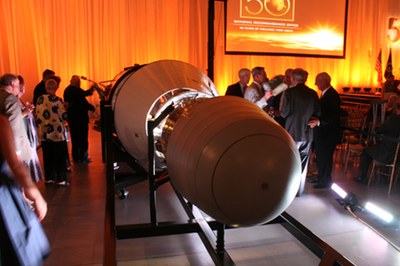Big Black throws a partyby Dwayne A. Day
|
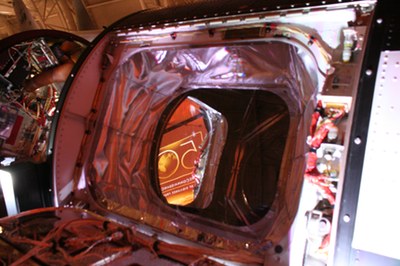 Spy satellite hardware on display. (credit: D. Day) |
Officially sponsored by the American Institute of Aeronautics and Astronautics, the event was attended by approximately 4,000 people who enjoyed (excellent) catered food, an open bar, an orchestra, and several fortunately not-terribly-long-winded speeches. But the highlight of the event (for me, anyway) was the declassification of two major Cold War-era reconnaissance satellite programs, the KH-7 and KH-8 GAMBIT and the KH-9 HEXAGON (see “Flashlights in the dark”, The Space Review, September 12, 2011). The NRO even brought in things to show off—an engineering mockup of the massive KH-9 and what is apparently a leftover flight version of the KH-7, which ceased operations in the latter half of the 1960s. Both objects were viewable for only one day, although only the KH-9 was open to viewing by the general public during the day (the KH-7 could be seen by visitors who went up to a museum walkway).
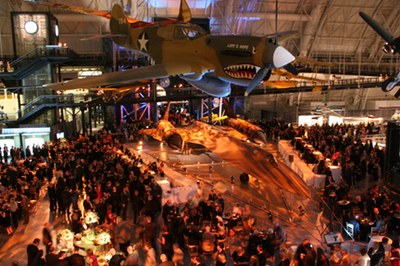 The NRO’s 50th anniversary party at the Udvar-Hazy Center Saturday night. (credit: D. Day) |
As icing on the cake, the NRO declassified dozens of documents about the two satellite programs. Although they could have done a simple release of information—a couple of fact sheets, some photographs—whoever spearheaded the declassification effort took their job seriously and released some astounding material. Perhaps the best of these were two comprehensive program histories written by a couple of retired NRO officials in the 1980s. There’s a wealth of detail in there on a major aspect of both the Cold War and the hidden American space program. While NASA was flying to the Moon and later building the Space Shuttle, tens of thousands of people were producing incredible technical wizardry and building satellites capable of gathering intelligence on the military capabilities of the Soviet Union.
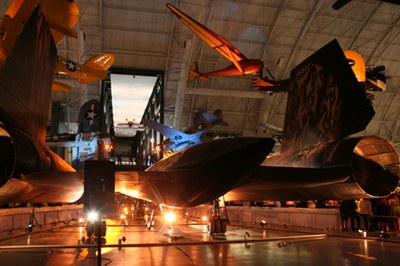 The NRO’s 50th anniversary party at the Udvar-Hazy Center Saturday night. (credit: D. Day) |
Although the information that the NRO released was great, it was not accompanied by a release of any newly declassified reconnaissance imagery, although some imagery was released back in 2002. Thus we know about the spacecraft, but relatively little about what they produced. Some of the released material therefore teases—like a video with a narrator who talks about the high-resolution imagery of the destroyed Soviet lunar rocket launch pad while the screen says “Picture REDACTED.” The reason seems to be that although NRO owns the information about the spacecraft, the actual imagery is owned by the National Geospatial Agency, which operates on its own schedule. Maybe we’ll see some of the amazing products produced by these satellites soon, or maybe we’ll have to wait a few more years, or decades—maybe when the NGA holds its own party.
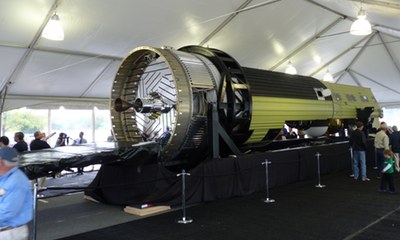 Earlier in the day the public got to see a model of the KH-9 HEXAGON satellite in a tent outside the museum. (credit: J. Foust) |
But what the NRO did on Saturday is pretty amazing. At a time when the American government is not held in high regard by its citizens, it’s worth remembering that sometimes the government—including the bureaucracy—can do some amazing things.
